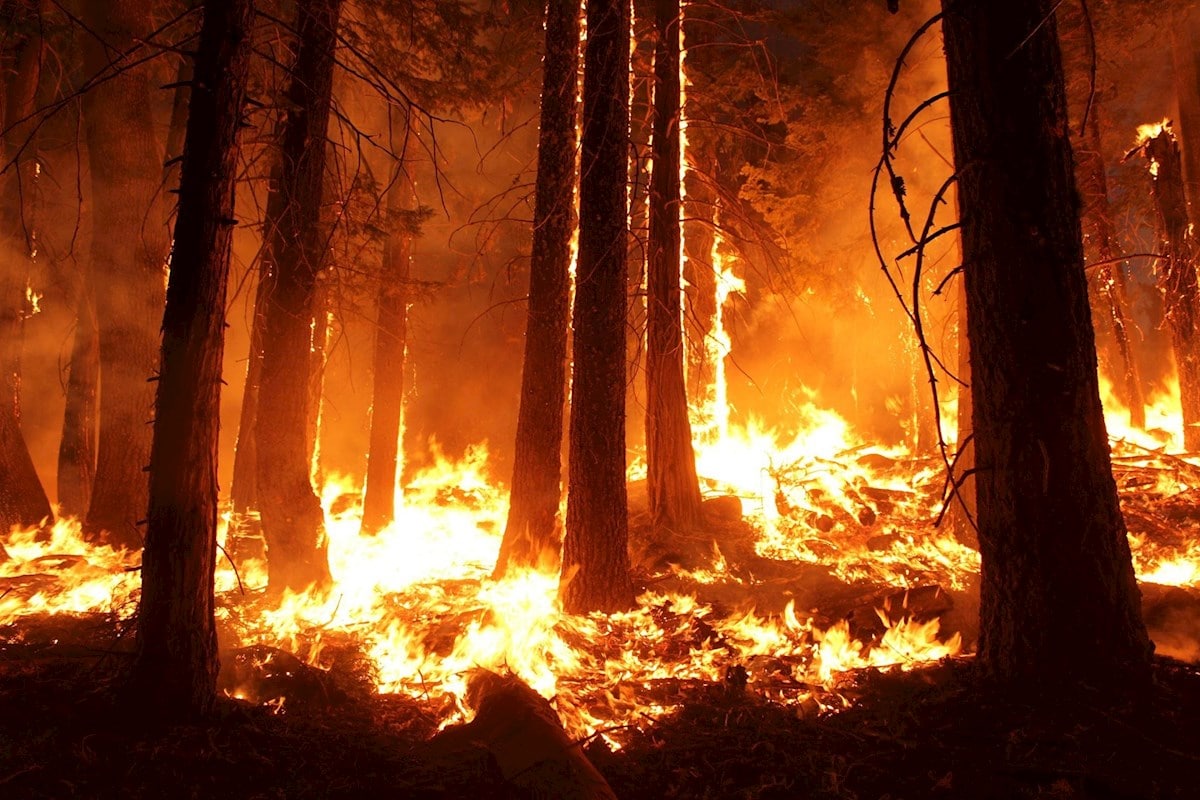While wildfires are an annual occurrence all over the world, destroying natural wonders and causing deforestation, they also result in vast amounts of pollutants into the air. Wildfire seasons in many parts of the world are starting earlier and are lasting longer resulting in devasting effects on communities.

The biggest health threat from smoke comes from microscopic fine particles. Forest fires generally cause particles of less than 1 micrometers – also known as PM1– that are fine enough to penetrate deep into the lungs and bloodstreams of local residents. Additionally, the chemicals generated from these fires are greenhouse gases (carbon dioxide (CO2), methane (CH4), nitrous oxide (N2O)) and photochemically reactive compounds (e.g., carbon monoxide (CO), non methane volatile organic carbon (NMVOC), nitrogen oxides (NOx), and ozone (O3)). These contaminants can cause a range of health problems, from burning eyes and a runny nose to aggravated chronic heart and lung diseases.
Wildfire smoke drawn into a building through an HVAC ventilation system lacking proper filtration can spread these risks throughout the facility.
Sensitive equipment and products being manufactured such as microelectronic parts or food and beverages can be damaged or destroyed
The most common temporary solution has been the use of carbon pleats. From a particulate perspective they are less than 5% efficient against the PM 1(ISO Coarse according to the ISO 16890 Classification System). To capture the particulate contamination from smoke you should additionally use a fine particle filter rated as minimum ePM1 70%. Carbon pleats would also have a minimal, temporary impact against the chemicals listed above allowing for trace odors and chemicals to progress into occupied spaces.
The best solution to not only address the fine particulates and chemicals from wildfires, but to also provide long term improved Indoor Air Quality we recommend the following filter setup: use a Hi-Flo ePM1 60% followed by the CityCarb I (ePM1 70%). This setup would provide you with ePM1 85% particulate efficiency of the total filter system according to ISO 16890 and over 80% removal efficiency against ozone and over 70% removal efficiency against nitrogen dioxide according to ISO 10121-3.
For individual rooms where you’re recirculating air to keep toxic pollutants out of your home, one of the following state-of-the-art air purifiers is a great way to keep patriculates at a minimum:
Mitigate your risks of dangerous and damaging microscopic particulates and gaseous contaminants generated from wildfire smoke. Contact your nearest Camfil office to work with a trained specialist to help with your specific application.